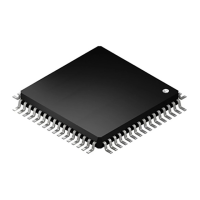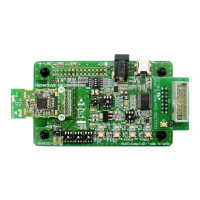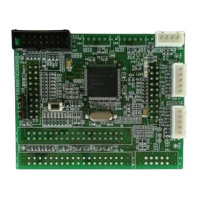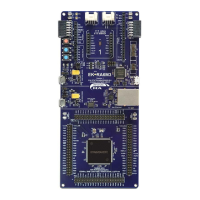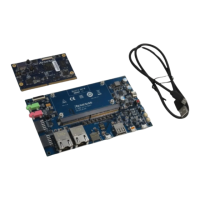RL78/F13, F14 CHAPTER 6 TIMER ARRAY UNIT
R01UH0368EJ0210 Rev.2.10 508
Dec 10, 2015
6.7.5 Operation as input signal high-/low-level width measurement
Caution When using a channel to implement the LIN-bus, set bit 7 (TIS17) to 1 and bit 6 (TIS16) to 0 of the
timer input select register 1 (TIS1). In the following descriptions, read TImn as RxD0.
By starting counting at one edge of the TImn pin input and capturing the number of counts at another edge, the signal
width (high-level width/low-level width) of TImn can be measured. The signal width of TImn can be calculated by the
following expression.
Signal width of TImn input = Period of count clock ((10000H TSRmn: OVF) + (Capture value of TDRmn + 1))
Caution The TImn pin input is sampled using the operating clock selected with the CKSmn bit of timer
mode register mn (TMRmn), so an error equivalent to one operation clock occurs.
Timer count register mn (TCRmn) operates as an up counter in the capture & one-count mode.
When the channel start trigger bit (TSmn) of timer channel start register m (TSm) is set to 1, the TEmn bit is set to 1 and
the TImn pin start edge detection wait status is set.
When the TImn pin input start edge (rising edge of the TImn pin input when the high-level width is to be measured) is
detected, the counter counts up from 0000H in synchronization with the count clock. When the valid capture edge (falling
edge of the TImn pin input when the high-level width is to be measured) is detected later, the count value is transferred to
timer data register mn (TDRmn) and, at the same time, INTTMmn is output. If the counter overflows at this time, the OVF
bit of timer status register mn (TSRmn) is set to 1. If the counter does not overflow, the OVF bit is cleared. The TCRmn
register stops at the value “value transferred to the TDRmn register + 1”, and the TImn pin start edge detection wait status
is set. After that, the above operation is repeated.
As soon as the count value has been captured to the TDRmn register, the OVF bit of the TSRmn register is updated
depending on whether the counter overflows during the measurement period. Therefore, the overflow status of the captured
value can be checked.
If the counter reaches a full count for two or more periods, it is judged to be an overflow occurrence, and the OVF bit of
the TSRmn register is set to 1. However, a normal interval value cannot be measured for the OVF bit, if two or more
overflows occur.
Whether the high-level width or low-level width of the TImn pin is to be measured can be selected by using the CISmn1
and CISmn0 bits of the TMRmn register.
Because this function is used to measure the signal width of the TImn pin input, the TSmn bit cannot be set to 1 while
the TEmn bit is 1.
CISmn1, CISmn0 of TMRmn register = 10B: Low-level width is measured.
CISmn1, CISmn0 of TMRmn register = 11B: High-level width is measured.

